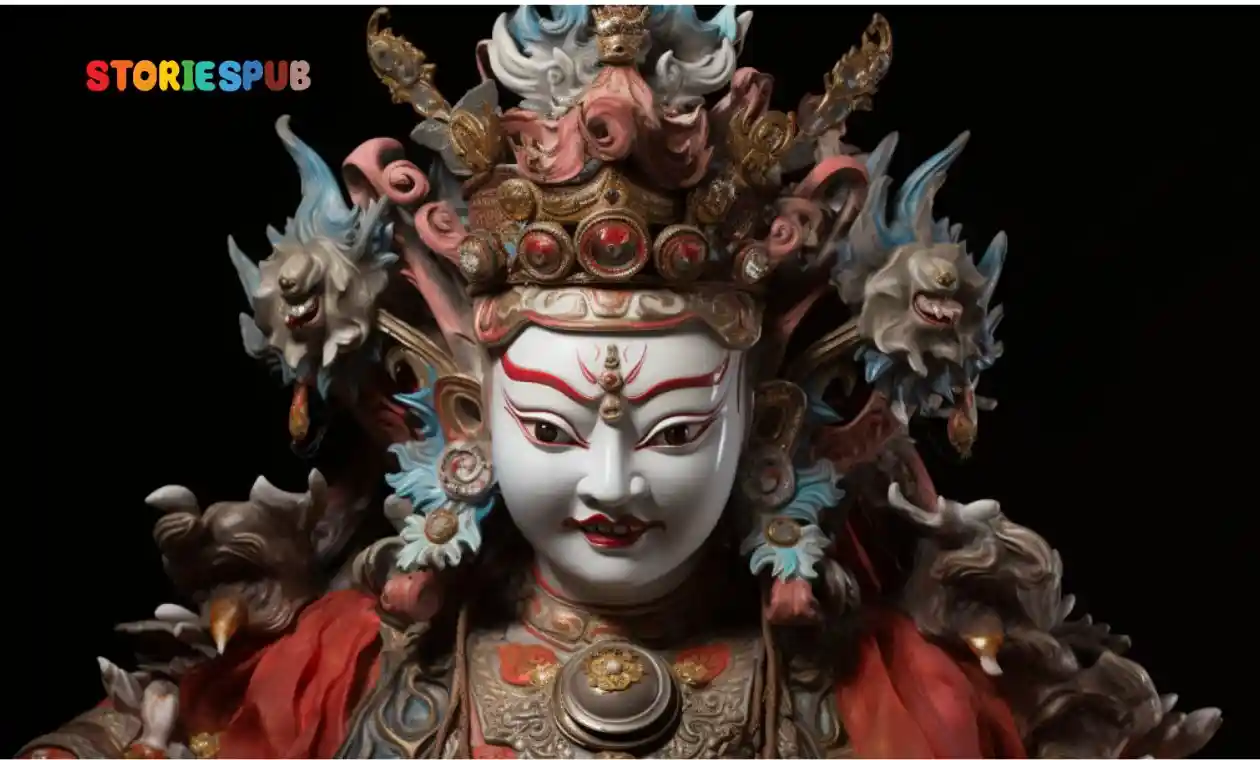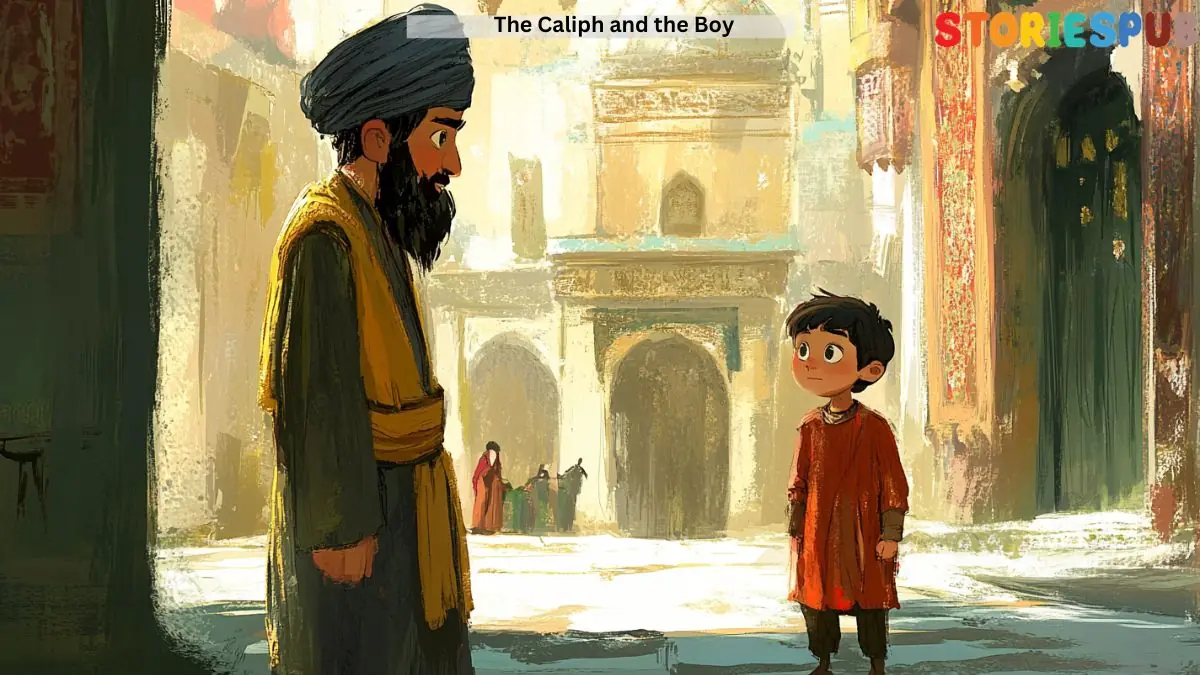The Legend of Rani Padmini: The Queen Who Defied Alauddin Khilji

The story of Rani Padmini is set in the 13th century Rajputana kingdom of Chittorgarh, where the beautiful queen Padmini lived with her husband, King Ratan Singh. Alauddin Khilji, the Sultan of Delhi, heard of Padmini’s beauty and was overcome with desire for her. He invaded Chittorgarh and demanded that Padmini be brought to him. Padmini refused to go and instead chose to perform Jauhar, a Rajput custom where women would choose death over dishonor. Rani Padmini’s sacrifice has been celebrated as a symbol of women’s empowerment and honor in Indian culture.
Historical background
The story of Rani Padmini is set in the Rajputana kingdom of Chittorgarh, which was known for its rich culture and heritage. The kingdom was ruled by the Sisodiya Rajputs, who were known for their bravery, chivalry, and sense of honor. In the 13th century, the kingdom was invaded by Alauddin Khilji, the Sultan of Delhi, who sought to expand his empire.
The siege of Chittorgarh by Khilji is considered to be a significant event in Indian history, and the story of Rani Padmini is a symbol of resistance and sacrifice against the invading forces. However, the historical accuracy of the story is debated by scholars, with some questioning the existence of Rani Padmini and others believing that the events depicted in the story are based on actual historical events.
Introduction to the Rajputana kingdom and the Chittorgarh fort
The Rajputana kingdom of Chittorgarh was located in present-day Rajasthan, India. It was founded by Bappa Rawal in the 8th century and was ruled by the Sisodiya Rajputs. The kingdom was known for its rich culture and heritage, including art, architecture, and literature.
Chittorgarh Fort, also known as Chittor Fort, was a significant fortress in the kingdom and was built in the 7th century by the Mauryans. It is spread over an area of 700 acres and is located on a hill overlooking the plains of Rajasthan. The fort has several palaces, temples, and other structures, including the Kirti Stambh, Vijay Stambh, and Rana Kumbha Palace.
The fort has witnessed several battles and sieges over the centuries, including the siege by Alauddin Khilji in the 13th century. During this time, the kingdom was ruled by Ratan Singh, who was married to Rani Padmini. The siege of Chittorgarh by Khilji is considered to be a significant event in Indian history, as it represented a clash between two powerful kingdoms and the struggle for control over the region.
While the exact dates of the events surrounding the siege of Chittorgarh are not clear, it is believed to have taken place in the late 13th century, during the period of the Delhi Sultanate. The siege lasted for several months, and despite being outnumbered, the Rajputs fought bravely to defend their kingdom. The story of Rani Padmini and her sacrifice during this time has become an enduring symbol of Rajput bravery and women’s empowerment in Indian culture.
Overview of the invasion of Alauddin Khilji
Alauddin Khilji was the Sultan of Delhi during the late 13th century and was known for his military conquests and expansionist policies. In 1296, he invaded the Rajputana kingdom of Chittorgarh, which was ruled by Ratan Singh at the time.
The exact reasons for the invasion are not clear, but it is believed that Khilji was attracted to the wealth and resources of the kingdom, as well as the legendary beauty of Queen Padmini. The siege of Chittorgarh lasted for several months, during which Khilji’s forces outnumbered the Rajputs.
Despite being outnumbered, the Rajputs fought fiercely to defend their kingdom. However, they were eventually defeated, and Khilji entered the fort. It is said that he was disappointed to find that Queen Padmini had committed Jauhar, along with several other women of the kingdom, rather than submit to him.
The invasion of Chittorgarh by Khilji is considered to be a significant event in Indian history, as it represented a clash between two powerful kingdoms and the struggle for control over the region. It also marked the beginning of a period of instability and conflict in the region, as several other kingdoms were invaded by the Delhi Sultanate in the following years.
Historical accuracy of the story
The story of Rani Padmini and the siege of Chittorgarh by Alauddin Khilji is a popular legend in Indian history and culture. However, the historical accuracy of the events described in the story is a matter of debate among scholars and historians.
While there are historical records that suggest that Alauddin Khilji did invade Chittorgarh and that there was a queen named Padmini, there is no conclusive evidence to support the claim that she was as beautiful as described in the story, or that she committed Jauhar to protect her honor.
Some historians believe that the story of Rani Padmini was a later invention, created to glorify the Rajput warriors and their bravery in the face of Muslim invaders. Others argue that the story may have some basis in historical fact, but that it has been embellished over time through oral traditions and literary works.
Regardless of its historical accuracy, the story of Rani Padmini continues to be a significant part of Indian mythology and has inspired numerous literary works and adaptations in popular culture.
Rani Padmini Story
Rani Padmini, also known as Padmavati, was a legendary queen of Chittorgarh, a kingdom in the Rajputana region of India. According to popular legend, she was born in the 13th century in the kingdom of Sinhala (present-day Sri Lanka) and was renowned for her beauty and grace.
As she grew older, Rani Padmini’s beauty became the talk of the kingdom and beyond, and many suitors sought her hand in marriage. However, she was already betrothed to Raja Ratan Sen, the ruler of Chittorgarh, who had seen a reflection of her in a magical mirror owned by a hermit. The two were said to have a loving and devoted relationship, and they had two children together.
In the early 14th century, Alauddin Khilji, the ruler of the Delhi Sultanate, launched an invasion of the Rajputana region with the aim of expanding his territory and consolidating his power. He set his sights on Chittorgarh, which was known for its wealth, military strength, and strategic location.
Raja Ratan Sen, the ruler of Chittorgarh, refused to submit to the Sultanate’s demands and prepared for war. Alauddin Khilji was determined to conquer Chittorgarh and lay siege to the fort, cutting off its supplies and preventing any reinforcements from reaching the kingdom.
As the siege continued, Rani Padmini’s beauty and grace became the talk of the Sultanate’s court, and Alauddin Khilji became obsessed with possessing her. He sent a message to Raja Ratan Sen, offering to end the siege if he could see a glimpse of the queen’s reflection in the magical mirror.
Raja Ratan Sen agreed to the request, but Rani Padmini was aware of the danger that Alauddin Khilji posed to her honor and the kingdom. She came up with a plan to deceive the Sultanate’s army and protect her honor.
She ordered for mirrors to be placed along the path leading to her chambers, and as Alauddin Khilji entered the palace, he saw countless reflections of Rani Padmini, but was never able to see the real queen. Disappointed and enraged, he decided to attack the fort, and a fierce battle ensued.
Despite the bravery and valor of the Rajput warriors, the Sultanate’s army eventually breached the fort and captured Raja Ratan Sen. Rani Padmini and the other women of the court chose to perform Jauhar, a ritualistic suicide by self-immolation, to protect their honor and avoid being taken as captives.
The exact date and year of the events surrounding the life of Rani Padmini are a subject of debate among historians and scholars. But the story of her sacrifice and the bravery of the Rajput warriors is still a big part of Indian mythology. It has also been the subject of many books and movies.
Early life and education
According to popular legend, Rani Padmini was born in the 13th century in the kingdom of Sinhala (present-day Sri Lanka). She was said to have been the daughter of King Gandharva Sen and his wife Champavati.
As a child, Rani Padmini was known for her beauty and grace, and her parents doted on her. She received a rigorous education in various subjects, including politics, history, art, and literature. She was also trained in martial arts and horse riding, skills that would serve her well in later life.
When Rani Padmini reached marriageable age, her father decided to hold a Swayamvar, a traditional ceremony where suitors would compete for her hand in marriage. Kings and princes from across the region attended the ceremony, but it was Raja Ratan Sen of Chittorgarh who won the competition and became her husband.
The marriage of Raja Ratan Sen and Rani Padmini was said to have been a love match, and the two were deeply devoted to each other. They had two children together, a son named Kumar Veer Singh and a daughter named Meerabai.
Rani Padmini was known for her intelligence, beauty, and compassion, and she was greatly respected by the people of Chittorgarh. She was a skilled administrator and was known to have helped her husband in the affairs of the kingdom. She was also an accomplished artist and musician and was said to have composed several poems and songs.
Despite being born into a wealthy and privileged family, Rani Padmini was known for her humility and compassion. She was deeply committed to the welfare of the people of Chittorgarh and was known to have helped the poor and needy. Her kindness and generosity earned her the love and admiration of her subjects, and she was regarded as one of the greatest queens of Rajputana.
King Ratan Singh
King Ratan Singh, also known as Raja Ratan Sen, was a legendary ruler of Chittorgarh, a kingdom in the Rajputana region of India. He was a skilled warrior and commander who was admired by his subjects for his bravery and leadership.
Not much is known about Raja Ratan Sen’s early life and education. According to legend, he was born into a Rajput family and was trained in martial arts and warfare from a young age.
His most famous and enduring legacy is his marriage to Rani Padmini, a legendary queen renowned for her beauty and grace. According to legend, Raja Ratan Sen saw a reflection of Rani Padmini in a magical mirror owned by a hermit, and was instantly smitten by her beauty.
He sent a marriage proposal to Rani Padmini’s father, and the two were married in a grand ceremony. Rani Padmini and Raja Ratan Sen were said to have a loving and devoted relationship, and they had two children together.
In the early 14th century, Alauddin Khilji, the ruler of the Delhi Sultanate, launched an invasion of the Rajputana region with the aim of expanding his territory and consolidating his power. He set his sights on Chittorgarh, which was known for its wealth, military strength, and strategic location.
Raja Ratan Sen refused to submit to the Sultanate’s demands and prepared for war. Alauddin Khilji was determined to conquer Chittorgarh and lay siege to the fort, cutting off its supplies and preventing any reinforcements from reaching the kingdom.
During the siege, Raja Ratan Sen was captured by the Sultanate’s army. Alauddin Khilji offered to release Raja Ratan Sen if he could see a glimpse of Rani Padmini’s reflection in a magical mirror. Raja Ratan Sen agreed to the request, but Rani Padmini was aware of the danger that Alauddin Khilji posed to her honor and the kingdom.
She came up with a plan to deceive the Sultanate’s army and protect her honor. She ordered for mirrors to be placed along the path leading to her chambers, and as Alauddin Khilji entered the palace, he saw countless reflections of Rani Padmini, but was never able to see the real queen. Disappointed and enraged, he decided to attack the fort, and a fierce battle ensued.
During the battle, Raja Ratan Sen was killed, and the exact details surrounding his death are unclear. Some legends claim that he died defending his kingdom and people, while others suggest that he was killed in a one-on-one combat with Alauddin Khilji.
The story of Raja Ratan Sen continues to be a significant part of Indian mythology and has inspired numerous literary works and adaptations in popular culture. He is remembered as a brave and chivalrous king who was devoted to his kingdom and his people.
Beauty and intelligence
According to legend, Rani Padmini was renowned for her beauty and intelligence. She was said to have a flawless complexion, sparkling eyes, and long, flowing hair that shone like silk. Her beauty was said to be so captivating that it could bring even the bravest warrior to his knees.
In addition to her physical beauty, Rani Padmini was also known for her intelligence and wit. She was said to be well-versed in poetry, music, and the arts, and was a skilled strategist and diplomat.
Her intelligence and strategic thinking were put to the test during the invasion of Allauddin Khilji. She devised a plan to protect her honor and the kingdom by deceiving the Sultanate’s army with the use of mirrors, showcasing her intelligence and quick thinking.
Conflict with Alauddin Khilji
The conflict between Raja Ratan Sen and Alauddin Khilji began when the latter set his sights on Chittorgarh, which was known for its wealth, military strength, and strategic location. Alauddin Khilji demanded that Raja Ratan Sen submit to his authority and hand over his kingdom, but the proud Rajput king refused to do so.
Alauddin Khilji then launched an invasion of the Rajputana region, with the aim of expanding his territory and consolidating his power. He besieged Chittorgarh and cut off its supplies, preventing any reinforcements from reaching the kingdom.
As the siege continued, Rani Padmini’s beauty and grace became the talk of the Sultanate’s court, and Alauddin Khilji became obsessed with possessing her. He sent a message to Raja Ratan Sen, offering to end the siege if he could see a glimpse of the queen’s reflection in the magical mirror.
Raja Ratan Sen agreed to the request, but Rani Padmini was aware of the danger that Alauddin Khilji posed to her honor and the kingdom. She came up with a plan to deceive the Sultanate’s army and protect her honor.
She ordered for mirrors to be placed along the path leading to her chambers, and as Alauddin Khilji entered the palace, he saw countless reflections of Rani Padmini, but was never able to see the real queen. Disappointed and enraged, he decided to attack the fort, and a fierce battle ensued.
Despite the bravery and valor of the Rajput warriors, the Sultanate’s army eventually breached the fort and captured Raja Ratan Sen. According to legend, Alauddin Khilji offered to release Raja Ratan Sen if he could see a glimpse of Rani Padmini’s reflection in a magical mirror.
Raja Ratan Sen agreed to the request, but Rani Padmini was aware of the danger that Alauddin Khilji posed to her honor and the kingdom. She came up with a plan to deceive the Sultanate’s army and protect her honor.
She ordered for mirrors to be placed along the path leading to her chambers, and as Alauddin Khilji entered the palace, he saw countless reflections of Rani Padmini, but was never able to see the real queen. Disappointed and enraged, he decided to attack the fort, and a fierce battle ensued.
During the battle, Raja Ratan Sen was killed, and the exact details surrounding his death are unclear. Some legends claim that he died defending his kingdom and people, while others suggest that he was killed in a one-on-one combat with Alauddin Khilji.
The conflict between Raja Ratan Sen and Alauddin Khilji highlights the clash between two vastly different cultures and ideologies. While the Rajputs valued honor, bravery, and loyalty, the Sultanate’s army was driven by greed, ambition, and the desire for power.
Ratan Singh’s imprisonment and offer of compromise
During the siege of Chittorgarh, Raja Ratan Singh was captured and imprisoned by Alauddin Khilji. Alauddin offered to release him if he agreed to make a compromise, but Raja Ratan Singh refused. Alauddin then made an offer to release him if he could see a glimpse of Rani Padmini’s reflection in the magical mirror. Rani Padmini was aware of the potential consequences of this request and devised a plan to deceive the Sultanate’s army.
On the day of the meeting, Rani Padmini ordered for mirrors to be placed along the path leading to her chambers. As Alauddin Khilji entered the palace, he saw countless reflections of Rani Padmini, but was never able to see the real queen. Disappointed and enraged, he decided to attack the fort, and a fierce battle ensued.
During the battle, Raja Ratan Singh was killed, but the Rajput warriors continued to fight with great courage and honor. Eventually, they were overwhelmed by Alauddin’s superior forces, and the Sultanate’s army breached the fort and captured the kingdom.
The legacy of Raja Ratan Singh continues to be remembered in Indian mythology as a brave and valiant king who fought for his kingdom and people with honor and integrity.
Rani Padmini’s refusal to compromise and decision to perform Jauhar
Despite the death of Raja Ratan Singh and the defeat of the Rajput army, Rani Padmini refused to submit to the Sultanate’s demands and chose to perform Jauhar, a ritualistic suicide by self-immolation, along with the other women of the court.
On the day of Jauhar, the women dressed in saffron robes and jewelry and walked towards a massive pyre that had been built in the courtyard of the palace. They carried swords and daggers with them, ready to fight and die for their honor and freedom.
As the flames engulfed them, the women sang hymns and chanted prayers, refusing to surrender to the invading forces. The smoke and flames from the pyre rose high into the sky, a testament to the bravery and sacrifice of the Rajput women.
The exact date and year of the events surrounding Rani Padmini’s decision to perform Jauhar are a subject of debate among historians and scholars. However, her sacrifice and the bravery of the Rajput women continue to be a significant part of Indian mythology and have inspired numerous literary works and adaptations in popular culture.
Rani Padmini is remembered as a symbol of beauty, grace, and honor, who made the ultimate sacrifice to protect her kingdom’s honor and freedom. Her legacy continues to inspire generations of Indian women to uphold their dignity and stand up for their rights, even in the face of great adversity.
Legacy and significance of the story
The story of Rani Padmini and Raja Ratan Singh has become an enduring legend in Indian mythology and continues to hold a significant place in the cultural consciousness of the country. The story is celebrated for its portrayal of courage, honor, and sacrifice in the face of overwhelming adversity.
The story of Rani Padmini and Raja Ratan Singh has been passed down through generations and has inspired countless literary works, films, and adaptations in popular culture. The tale has also become a symbol of Rajput valor and has played an important role in the construction of Rajput identity.
The story of Rani Padmini and Raja Ratan Singh also holds a place in the history of Indian resistance to foreign invasion and colonialism. The Rajput resistance to Alauddin Khilji’s invasion is seen as a symbol of resistance to foreign domination and has been invoked in the struggle for Indian independence.
Overall, the legacy and significance of the story of Rani Padmini and Raja Ratan Singh lie in its portrayal of bravery, honor, and sacrifice in the face of overwhelming adversity. The story continues to inspire and captivate audiences to this day, and its enduring popularity is a testament to the enduring power of myth and legend in Indian culture.
Women’s empowerment and the role of honor in Rajput culture
The story of Rani Padmini is often seen as a symbol of women’s empowerment and the role of honor in Rajput culture. Rani Padmini is remembered as a brave and intelligent queen who was willing to make great sacrifices to protect her honor and the honor of her kingdom.
In the story, Rani Padmini’s refusal to compromise and her decision to perform Jauhar with the other women of the court is seen as an act of courage and self-determination. It is often interpreted as a symbol of women’s agency and their ability to make their own choices, even in difficult and oppressive circumstances.
The concept of honor is also a central theme in Rajput culture, and it is believed that one’s honor is tied to their actions and their reputation. For the Rajput community, honor is a matter of great importance, and they are willing to make great sacrifices to protect it.
In the story of Rani Padmini, her decision to perform Jauhar with the other women of the court is seen as an act of honor and courage. It is believed that by performing Jauhar, the women were able to protect their honor and avoid being taken as captives by the Sultanate’s army.
Overall, the story of Rani Padmini is seen as a powerful symbol of women’s empowerment and the importance of honor in Rajput culture. It continues to inspire and resonate with people around the world, and its legacy is a testament to the enduring power of myth and legend.
Adaptations of the story in literature and film
The story of Rani Padmini has been adapted into various literary works and films over the years. One of the earliest literary adaptations is the 16th-century poem “Padmavat” by Malik Muhammad Jayasi. The poem is written in the form of a Sufi allegory, and tells the story of the love between Rani Padmini and Raja Ratan Singh, as well as the invasion of Alauddin Khilji and the Jauhar performed by the women of Chittorgarh.
In modern times, the story of Rani Padmini has been adapted into several films, both in Bollywood and other Indian film industries. One of the most famous adaptations is the 1963 film “Mughal-e-Azam,” which is loosely based on the legend of Rani Padmini and her sacrifice. The film is considered a classic of Indian cinema and has inspired many other adaptations and spin-offs.
In recent years, there has been controversy surrounding the depiction of Rani Padmini in films and other media, with some groups objecting to what they see as a distortion of historical facts and a misrepresentation of Rajput culture. Despite this controversy, the story of Rani Padmini continues to be a significant part of Indian mythology and has inspired countless works of art and literature.
Rani Padmini’s death place
The exact location of Rani Padmini’s Jauhar Kund, the site where she and other women of the court performed the ritualistic suicide by self-immolation, is a matter of debate among historians and scholars. Some believe it to be located within the Chittorgarh Fort itself, while others suggest that it may be located outside the fort walls.
Rani Padmini’s death date and year
There is no clear consensus on the exact date and year of Rani Padmini’s death. The events surrounding her life and the siege of Chittorgarh are a subject of debate among historians and scholars. Some legends suggest that the siege occurred in 1303 CE, while others suggest that it took place in 1305 CE. Similarly, the exact date of Rani Padmini’s Jauhar is unclear, but it is believed to have occurred shortly after the fall of Chittorgarh.
Conclusion
The story of Rani Padmini is not just a tale of a brave queen and her valiant king, but a reflection of the cultural values and beliefs of Rajputana society. It highlights the importance of honor, courage, and women’s empowerment, and continues to inspire generations of Indians.
As readers, we can deepen our understanding of this story by exploring its various adaptations in literature and film, and visiting historical sites such as the Chittorgarh fort to witness the legacy of the Rajputana kingdom firsthand.
We can also reflect on the enduring lessons of the story, such as the importance of preserving one’s honor and integrity in the face of adversity, and the power of women to assert their agency and autonomy.
Readers are encouraged to learn more about the story of Rani Padmini and its impact on Indian culture and history. They can explore the various literary works and adaptations of the story, as well as visit historical sites such as the Chittorgarh fort to learn more about the Rajputana kingdom and its rich cultural heritage.
Hey kids, how much did you like The The Legend of Rani Padmini: The Queen Who Defied Alauddin Khilji? Please share your view in the comment box. Also, please share this story with your friends on social media so they can also enjoy it, and for more such Hindu Mythology, , please bookmark storiespub.com.
Check out other stories that we have:



















